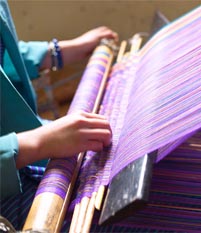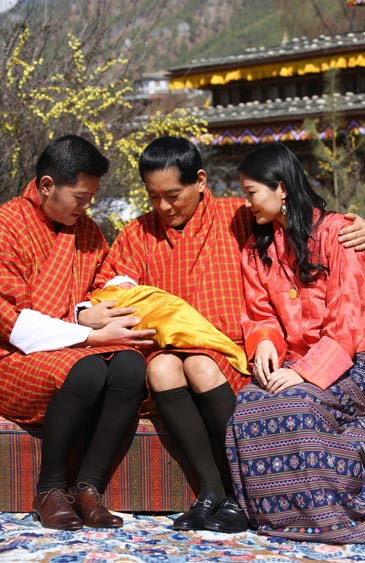Explore the breathtaking Himalayan Kingdom of Bhutan at Druk Asia’s Travel Fair at ION Orchard Mall, bringing you a glimpse of one of the world’s most beautiful and untouched destinations.
Uncover its rich culture through this immersive exhibition – from incredible landscape photography providing a visual feast, to witnessing the intricate, ancient art of Bhutanese loom weaving with live demonstrations and a showcase of its fabrics, to photo booths where you can don the national
dress of Bhutan – the gho and kira, and have your picture taken, as well as
buy Bhutanese food and handicrafts, there is certainly something for
everyone!
Visit www.drukasia.com for the full schedule of activities and exhibits.
Discover exclusive travel package deals at the travel fair, and stand to win
all-expense paid trips to Bhutan when you shop at ION!
Handloom Demonstrations By A Royal Weaver
 Observe the Bhutanese traditional
art-form of loom weaving with
demonstrations by Ms. Tshomo, a
Royal Weaver, whose works included
the Kitshothara Kira and Shinglo Gho
for the Royal wedding of His Majesty
the King Jigme Khesar Namgyal
Wangchuck and Her Majesty the
Queen Jetsun Pema.
Observe the Bhutanese traditional
art-form of loom weaving with
demonstrations by Ms. Tshomo, a
Royal Weaver, whose works included
the Kitshothara Kira and Shinglo Gho
for the Royal wedding of His Majesty
the King Jigme Khesar Namgyal
Wangchuck and Her Majesty the
Queen Jetsun Pema.
Witness the intricacy, incredible detail
and skill that goes into the creation of
fabric to make traditional Bhutanese
attire: The Kira, which is worn by
women and the Gho that is for the men.
Like most women in her country, Tshomo has been weaving since she was
nine years old. Weaving is a specialised skill that all Bhutanese women are
encouraged to learn as children. In most homes, one will find a wooden
frame on which mothers teach their daughters to weave dream designs in
fabulously-coloured threads.
Garments Fit For A King
 On display at the Discover
Breathtaking Bhutan Travel Fair at
ION Orchard, are a collection of
traditional Bhutanese costumes; the
Bhutanese traditional dress gho and
kira a 16th century old custom. Gho is a
knee-length dress like the Japanese
kimono and has some resemblance to
the Scottish kilt, normally made of white
raw silk, cotton and polyester. In cold
Himalayan climatic condition, double
ghos provides warm insulation from icy
winds during long winter months.
On display at the Discover
Breathtaking Bhutan Travel Fair at
ION Orchard, are a collection of
traditional Bhutanese costumes; the
Bhutanese traditional dress gho and
kira a 16th century old custom. Gho is a
knee-length dress like the Japanese
kimono and has some resemblance to
the Scottish kilt, normally made of white
raw silk, cotton and polyester. In cold
Himalayan climatic condition, double
ghos provides warm insulation from icy
winds during long winter months.
Women wear ankle length piece of long
skirt like dress supported by clipper
designed like brooches called koma on
the shoulders. Like gho, colourful hand
woven flowery patterned kera is used to
tie around waist separating the upper
and lower folds of kira.
Visit the Discover Breathtaking Bhutan Travel Fair to see Royal Garments
made for His Majesty the King Jigme Khesar Namgyal Wangchuck and Her
Majesty the Queen Jetsun Pema, as well as traditional Bhutanese gho and
kira daily wear.
Textiles For Good
 With the aim to preserve and promote
weaving, the Royal Textile Academy of
Bhutan was instituted in May 2005
under the patronage of Her Majesty
the Queen Mother as a
non-government, non-profit
organization. Established as an
educational centre for the training of
individuals in the traditional art of
weaving, it seeks to preserve and
conserve the culture of Bhutanese
Textiles.
With the aim to preserve and promote
weaving, the Royal Textile Academy of
Bhutan was instituted in May 2005
under the patronage of Her Majesty
the Queen Mother as a
non-government, non-profit
organization. Established as an
educational centre for the training of
individuals in the traditional art of
weaving, it seeks to preserve and
conserve the culture of Bhutanese
Textiles.
Each purchase of textiles, accessories and garments at the Discover
Breathtaking Bhutan Travel Fair will see proceeds going to the RENEW
Women’s Fund, a Charitable Trust by the Queen Mother of Bhutan, Her
Majesty Sangay Choden Wangchuck.
The RENEW Women's Fund is an organization that provides emergency and
integrated relief and support services to women and girls suffering from
domestic and gender based violence and sexual abuse, assisting
marginalized women and girls through shelter, counselling, legal services,
advocacy and awareness and scholarships.
In Pursuit Of Happiness
 Bhutan is known famously as the first country in the world to measure
progress based on happiness.
To do so, the 4th Druk Gyalpo coined the term Gross National Happiness
(GNH). From then on, GNH was used to measure the country’s development
instead of Gross National Product (GNP).
The happiness of the Bhutanese is
more important than material growth
and there should be a balance
between to two. A GNH Commission
was created to take an annual
measure of how the people fare. The
poll is based on an index of nine
domains.
Bhutan is known famously as the first country in the world to measure
progress based on happiness.
To do so, the 4th Druk Gyalpo coined the term Gross National Happiness
(GNH). From then on, GNH was used to measure the country’s development
instead of Gross National Product (GNP).
The happiness of the Bhutanese is
more important than material growth
and there should be a balance
between to two. A GNH Commission
was created to take an annual
measure of how the people fare. The
poll is based on an index of nine
domains.
Living standards, education, health,
cultural diversity and resilience,
community vitality, time use,
psychological wellbeing, ecological
diversity, and good governess are the
nine domains that are taken into
account. According to the GNH
Commission, 81.5% of the population
of Bhutan is deeply happy.